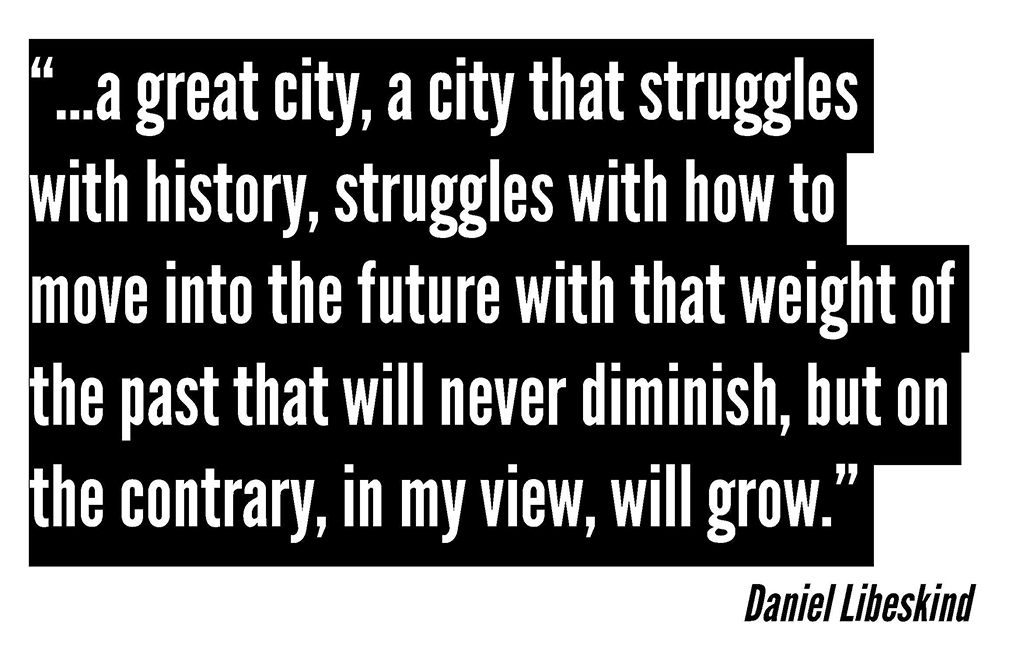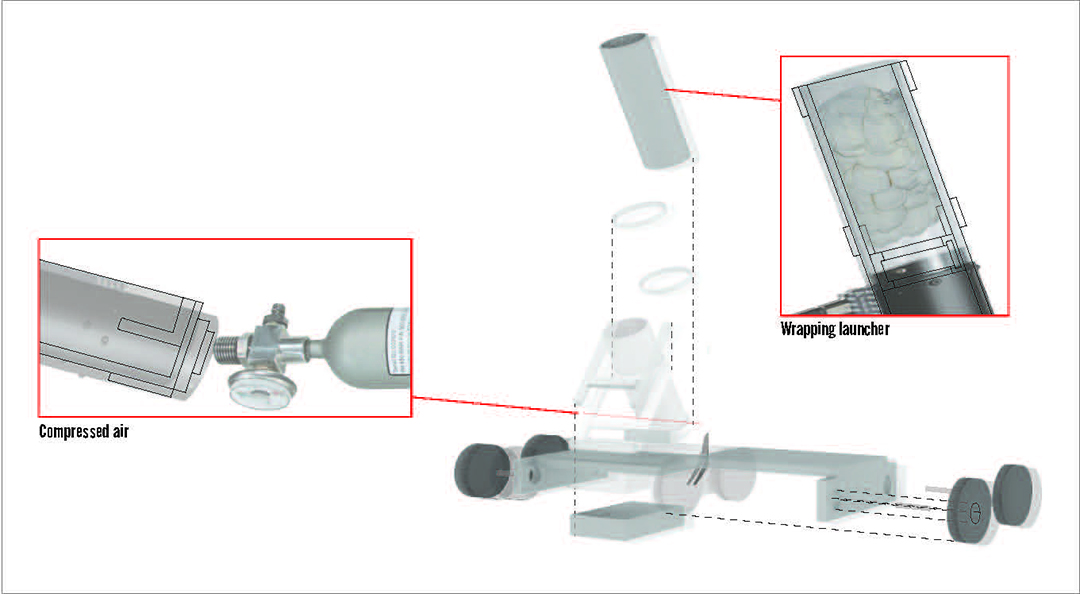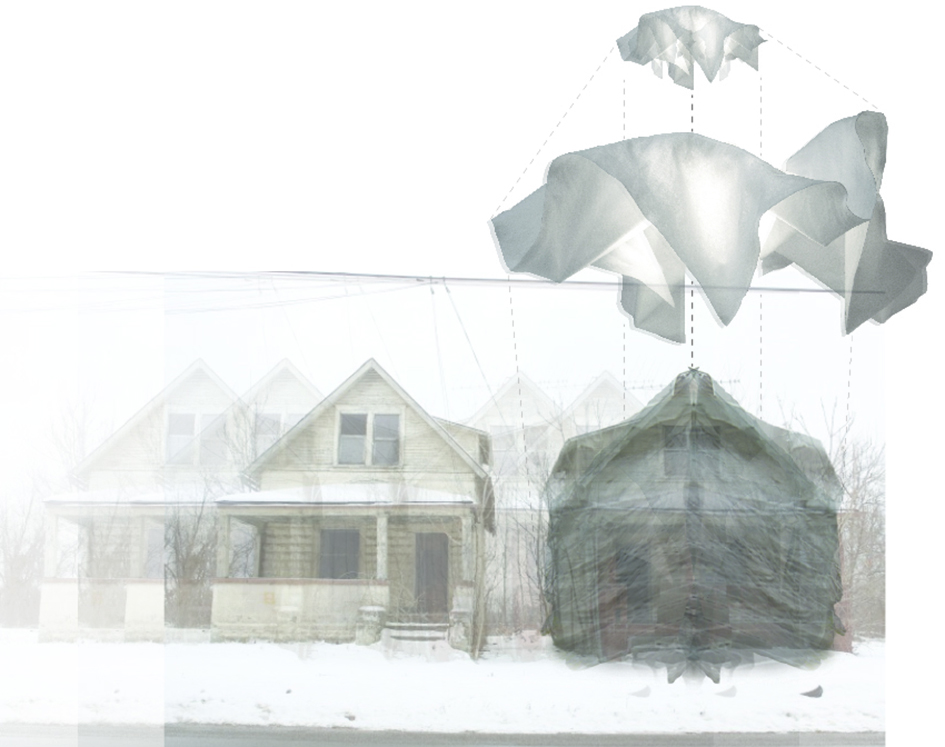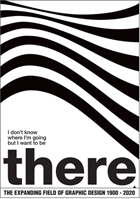This is the third in an annual series of essays by students of the Ball State University Architecture program. Previous works by Jesse McClain and Phil Borkowski appeared in 2014 and 2015. —Ed.
Kenna Gibson
I am from a small town 10 miles away from Muncie, Indiana. Muncie: home of Ball State University, former home of Ball Corporation, BorgWarner, Delco Remy, General Motors, A. E. Boyce Company, and Westinghouse Electric. The list of industries that have left the city is much longer than the list of those that have stayed. For my third year architecture studio, we were to connect machines with the rust belt. What we were supposed to create, probably something that would aid the citizens, neither I nor my professor, Wes Janz, really knew. Easy enough, I thought, because I live in the Rust Belt.

A happy accident led me to read excerpts about Tammy Thomas, a Youngstown, Ohio resident, in The Unwinding: An Inner History of the New America by George Packer. The features about Thomas followed her story as she navigated life in a rust belt city, past and present. The majority of her stories look at what Youngstown once was compared with what it is currently, how her memories of certain places changed and failed and shaped her. One story illustrates Thomas as a young girl, living with her grandmother, a maid, in a wealthy, white home in Youngstown. As an adult, Thomas visits the house she knew as a girl. The house is the same but little things have been changed; paint, flooring, décor- things that made it home.

I felt it must have been a strange parallel, a déjà vu of sorts where something subtle is off. I began to see Rust Belt cities as this parallel universe where lives, economies, and industry shift but the city remains. Rust Belt cities are essentially unraveling. Thomas’s stories helped show me that residents of the Rust Belt connect to a place through their memories of it. Memory of the Rust Belt, the glory days and what has been, is very important for residents of these lost cities. I found that the Rust Belt is a place of loss, despair, and ruin, but connecting with a city and its residents on a personal level is much more telling than simply looking at statistics.

Memory represents who we are, our habits, our ideologies, and our hopes and fears, but it also gives an indication of who we will become. What Thomas thought she remembered as a child was not always true, but offers a new way of experiencing the Rust Belt. Discovering Daniel Libeskind’s Memory Machine, and then looking at his Berlin Jewish Museum and Memory Foundations in New York City, led me to ask how one can move a city into the future and allow the weight of its past to not diminish, but grow. The distortion of memory caused me to examine the cities of the Rust Belt in a new way. No longer was I looking simply at what the Rust Belt cities were, but I looked at how the false memory of them could shape what they look like in the future.

Initially, I saw a machine as an apparatus that uses power to perform a task, to perform labor. Once I read Thomas’s story and connected with her and Youngstown, I rethought my idea of a machine. Does a machine have to provide labor? Definitions of machines range from a well-organized group of powerful people to a device that transmits a force. Libeskind’s Memory Machine was to “disengage sites and return them to their original location.” While the goal is not to create a time machine, Libeskind’s way of thinking encouraged me to explore new solutions.

Boarded up windows and mothballed houses are very common scenes around Rust Belt cities, common and also very expensive, time consuming, and relatively ineffective. I stumbled across an image of the German Reichstag wrapped in a billowy fabric. I became inspired by artists Christo and Jeanne-Claude to wrap abandoned houses. Their wrapped buildings feature folds that highlight the structure’s features and proportions, revealing the simple essence of a building. Wrapping an abandoned building in fabric would serve practical purposes, keeping out squatters, vermin, and the elements, and protecting the surrounding environment from the potentially harmful materials in the house. The wrapping would also create a quality of impermanence and change.

My machine could utilize technology skimmed from a rocket launcher, a t-shirt gun, a space rover, and a remote-controlled car. From the direction of an operation with a remote control, the machine would shoot out a parachute to engulf the house. The operator would then tie the house up, sealing the house off from the environment but also the environment from the house. I see the wrapping as a way to preserve houses for a time also, allowing them to be unwrapped when funds or support become available to save or re-purpose the building. With the machine, community members like Thomas would be able to meet up and decide which homes needed to be wrapped first, and which could wait. Community members would be active in the decision to wrap and unwrap houses around their city.
I want to be a designer that leaves the mindset of simply building for the sake of it. Who am I to say that the residents of places considered in need of help are even looking for help? For me, the machine was not the final project created. My journey looking at memory of a place had much more impact than the final deliverable ever could. I don’t want to be an architect that creates cookie-cutter buildings, not caring about who or what they affect or who uses them. My professor challenged me to create a project that would lead future employers to be inquisitive and inspired by this project, and I plan to carry that way of thinking throughout the rest of my work.
Kenna Gibson is a fourth year architecture student at Ball State University who hopes to influence others to create positive environments.











Leave a Reply
You must be logged in to post a comment.